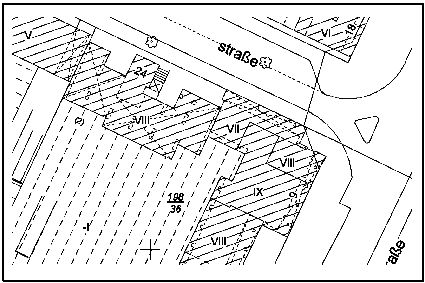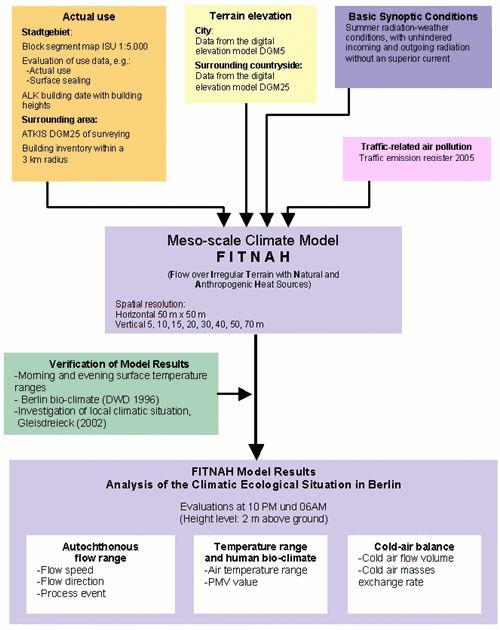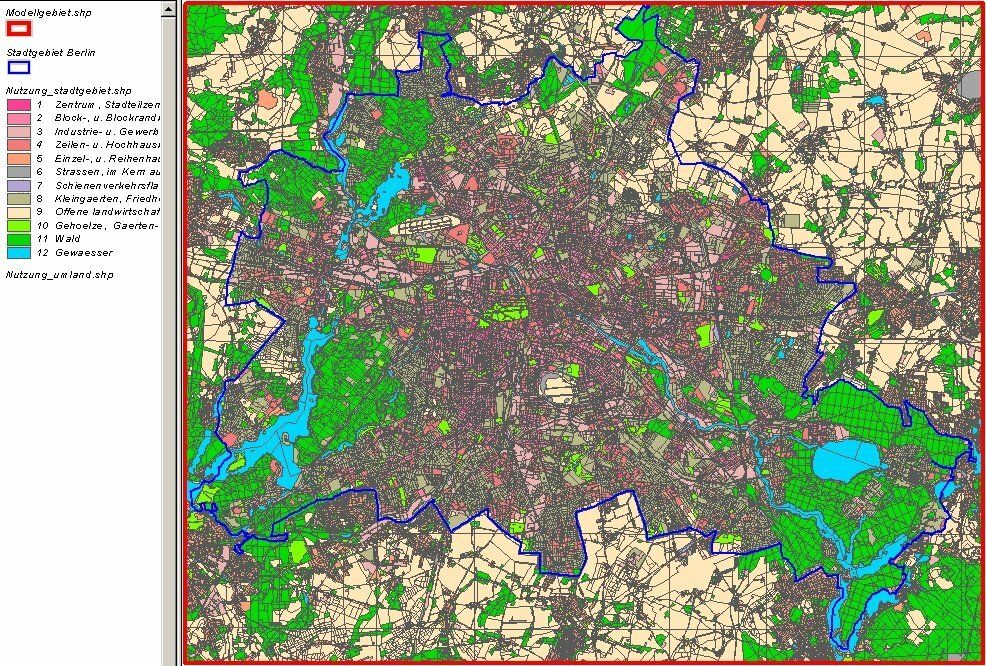Only a few of the parameters used for the Berlin urban area were obtained especially for this project; for the most part, data bases developed over the years of work on the Environmental Atlas and for the Berlin ISU which are available for various evaluations and calculations. The Urban and Environmental Information System (ISU) of the Senate Department of Urban Development contains approx. 25,000 individual areas in a spatial reference system, which has been made available for the calculation of the climatic quanta in the ISU:
- Land use. The data on land use show the status of year-end 2005 and are based on the evaluation of aerial photography, borough land use maps and additional documents for the Environmental Atlas (cf. Map 06.01 and Map 06.02, SenStadt 2008a). Some 30 types of use are distinguished.
- Urban structural types (Map 06.07, SenStadt 2008b). A further improvement of this data was carried out via a factual database, which contains type-specific details on the heights of buildings and vegetal structures within the individual urban structural types.
- Sealing (Map 01.02, SenStadt 2007).
- A digital terrain elevation model (DGM5) was available for the downtown area and partially for the north and southeast of the city. For the remaining area, a DGM25 has been at hand.
From the preliminary work for the conversion of the European Union guideline to the ambient noise, a building file with elevation data (date 2005) has been used which contains all 550,000 buildings of the Automated Property Map (ALK) of the federal state of Berlin as well as 231,445 buildings of the federal state of Brandenburg within a distance of 3 km around Berlin.
The ALK, as the illustrative section of the so-called Property Register, shows not only the lots, but also the buildings in their precise size, including numbers of storeys, and is therefore well suited as an information base for the illustration of building structures (cf. Fig. 2).



